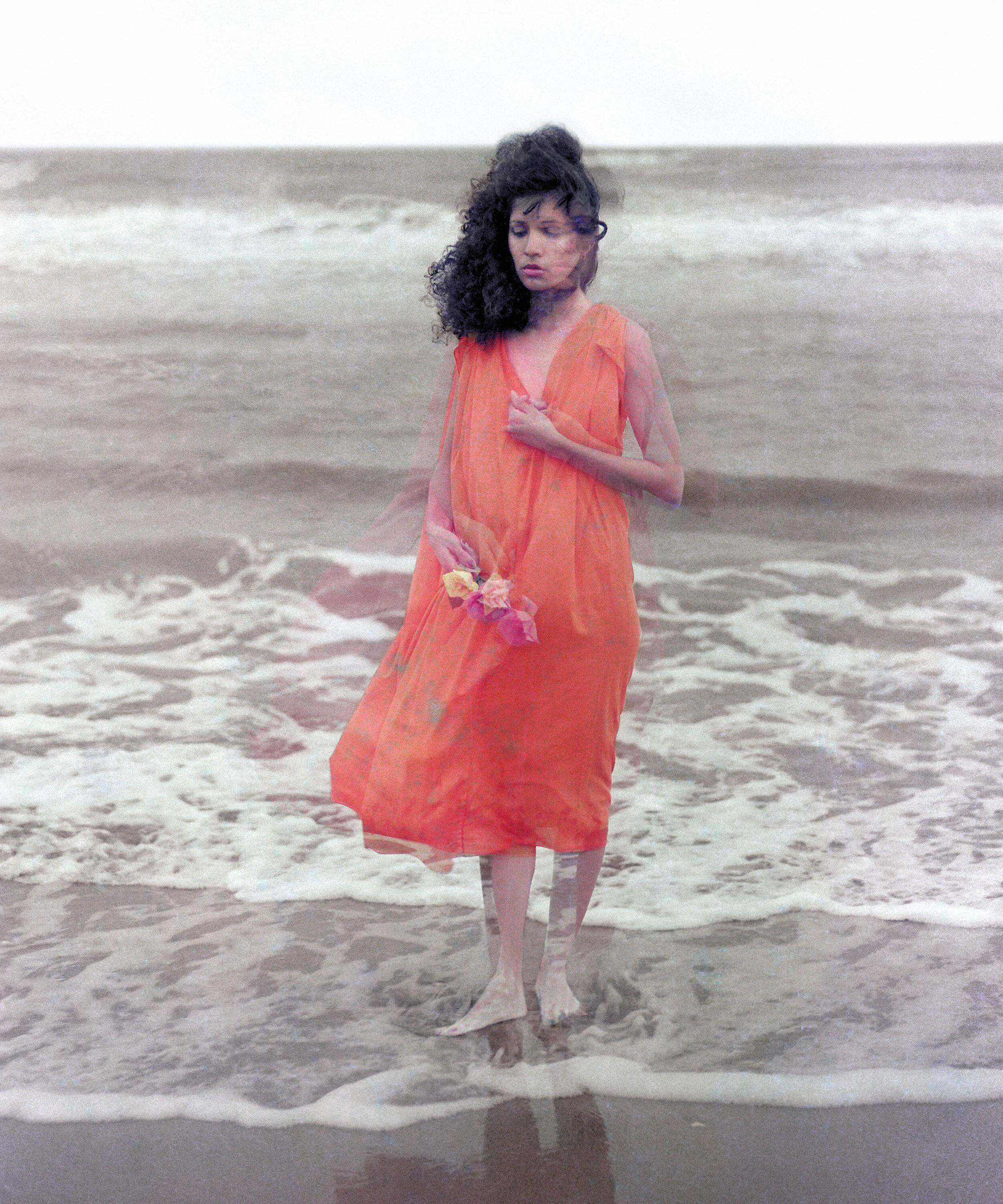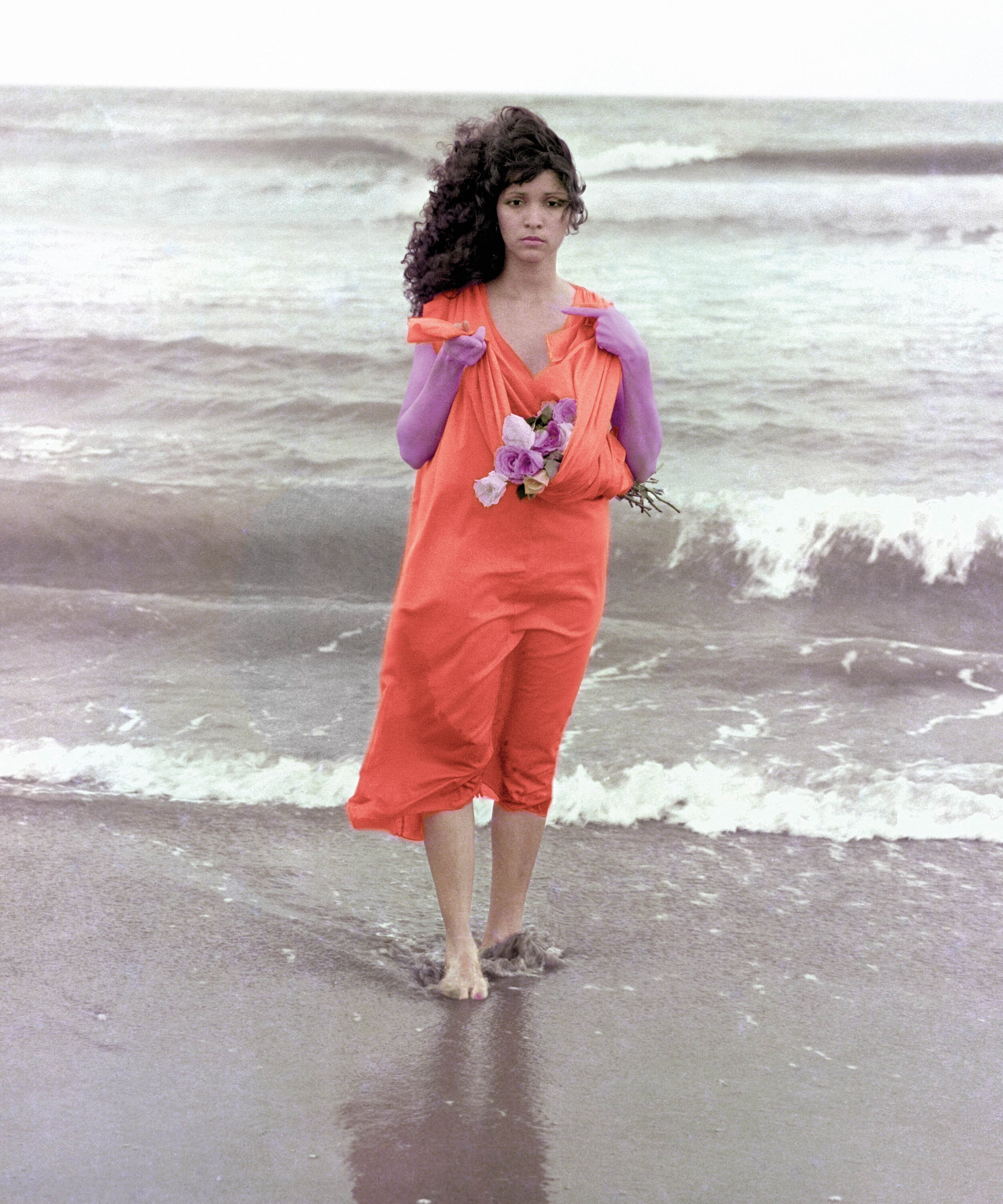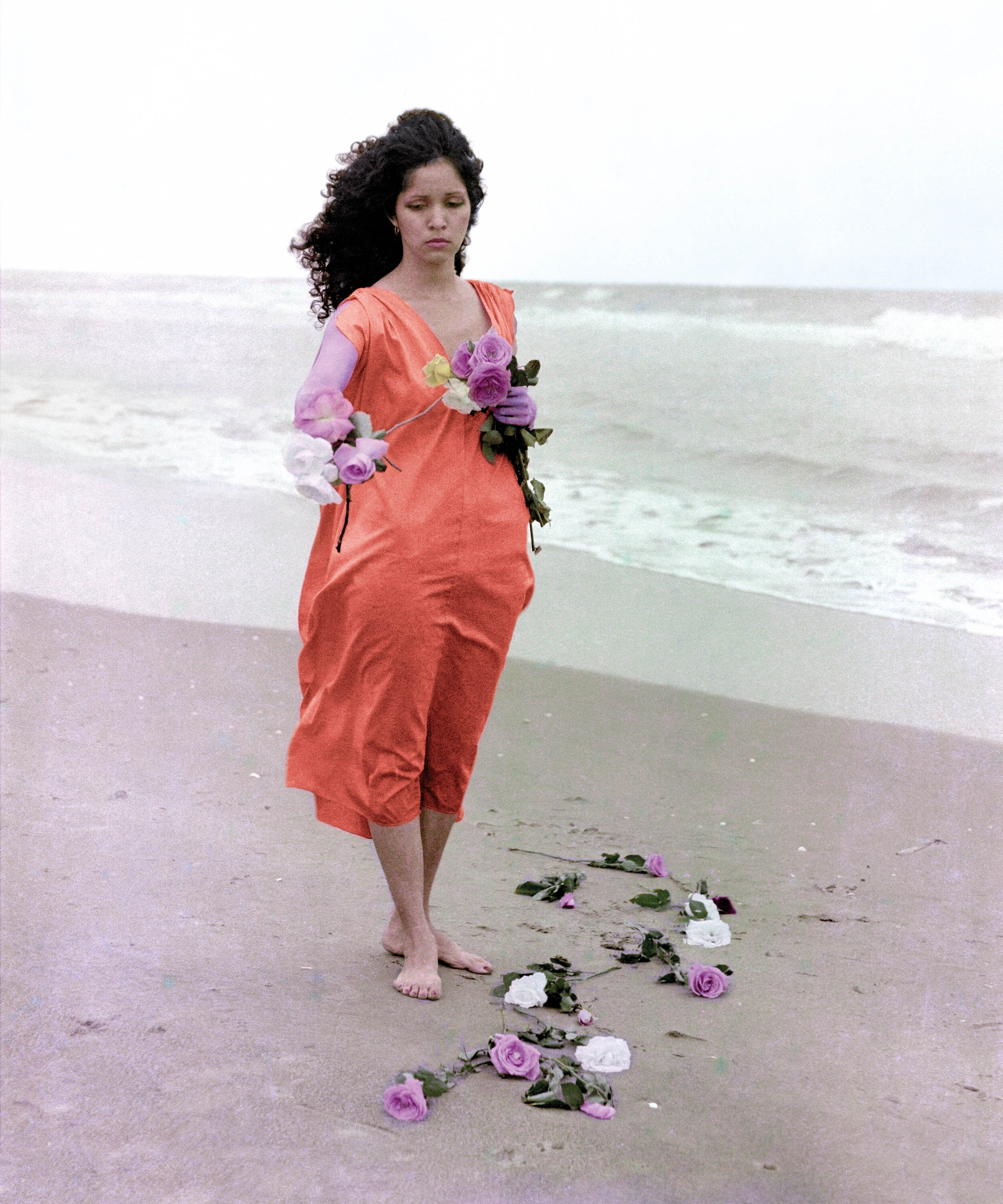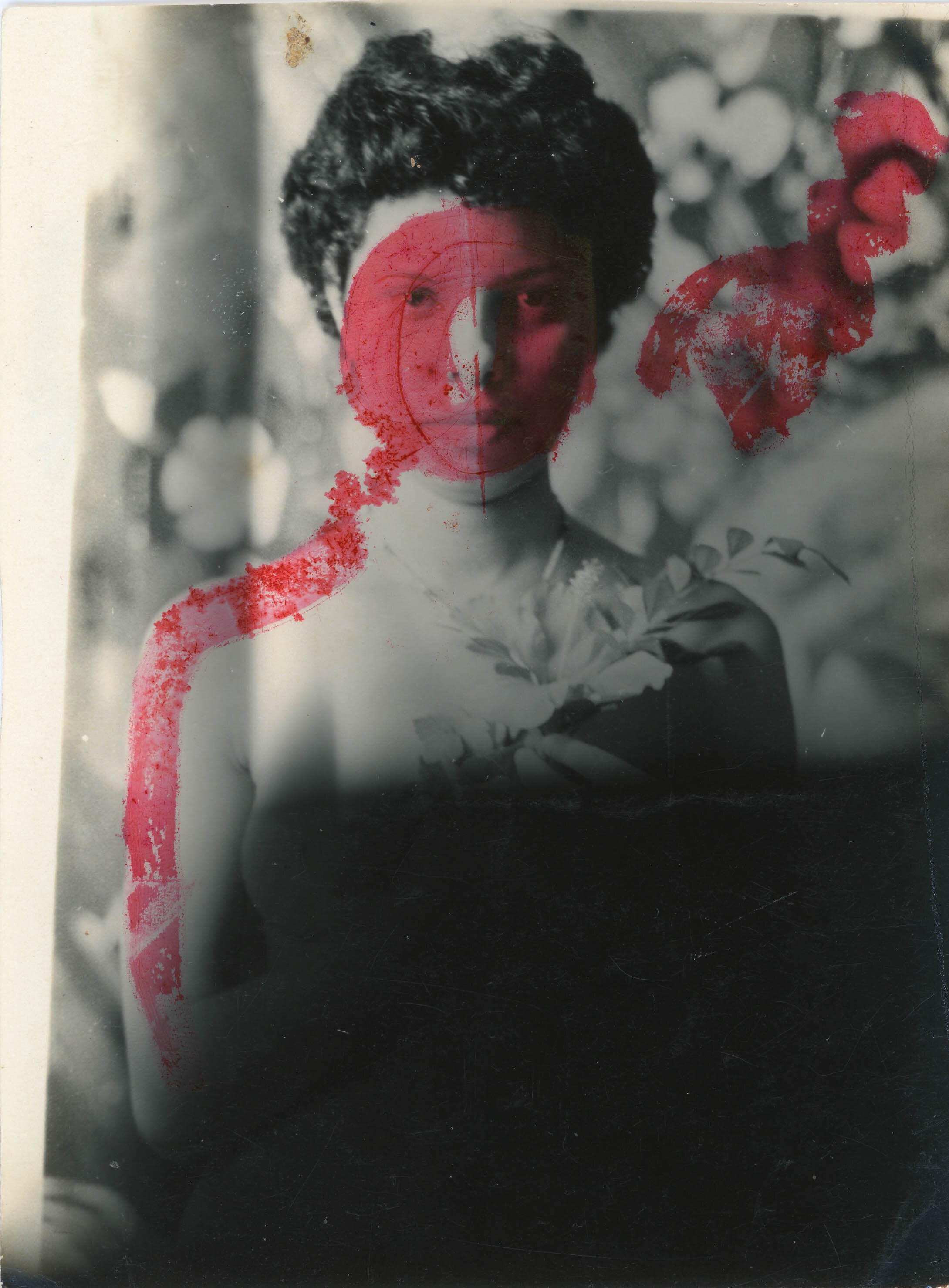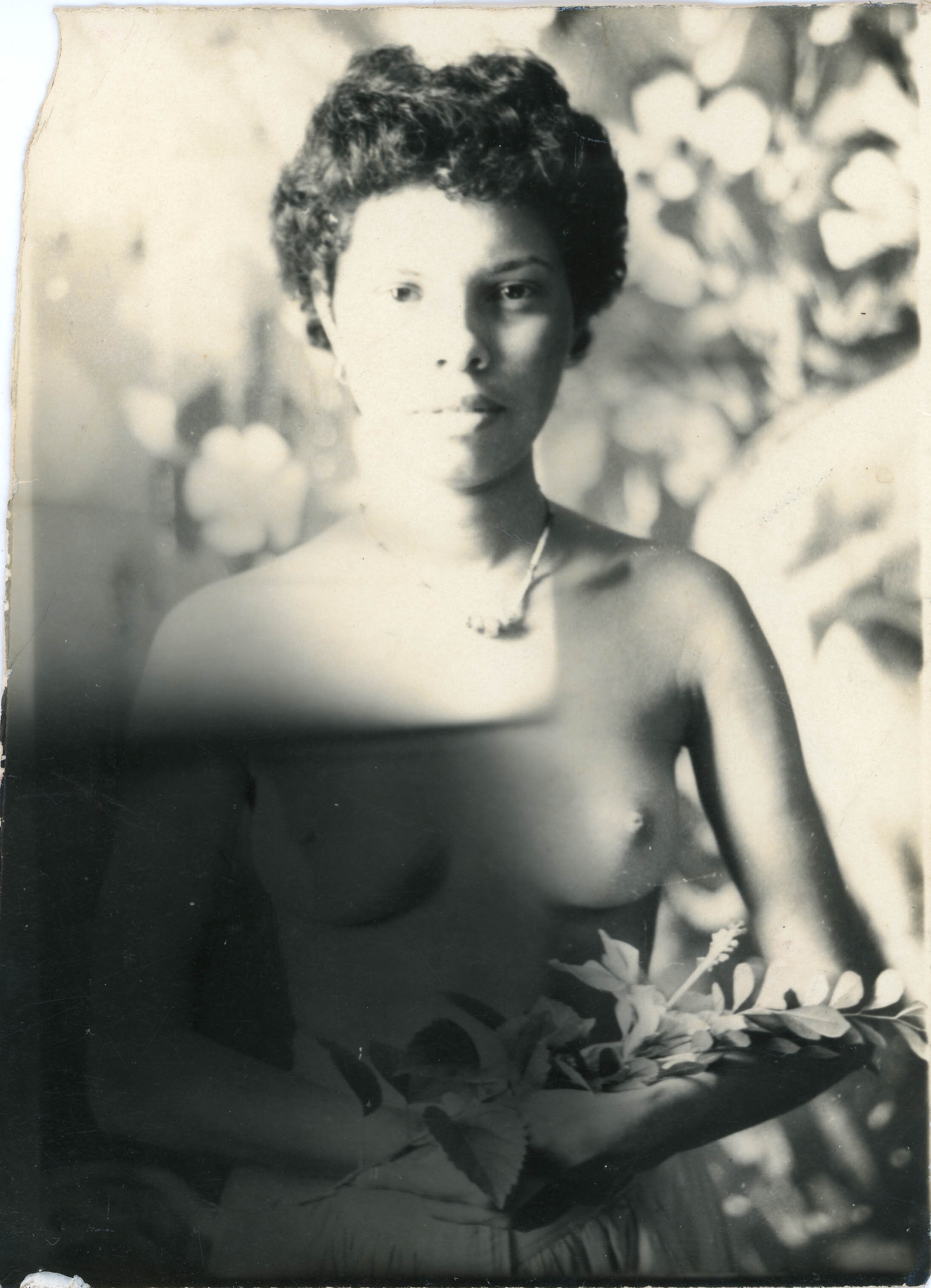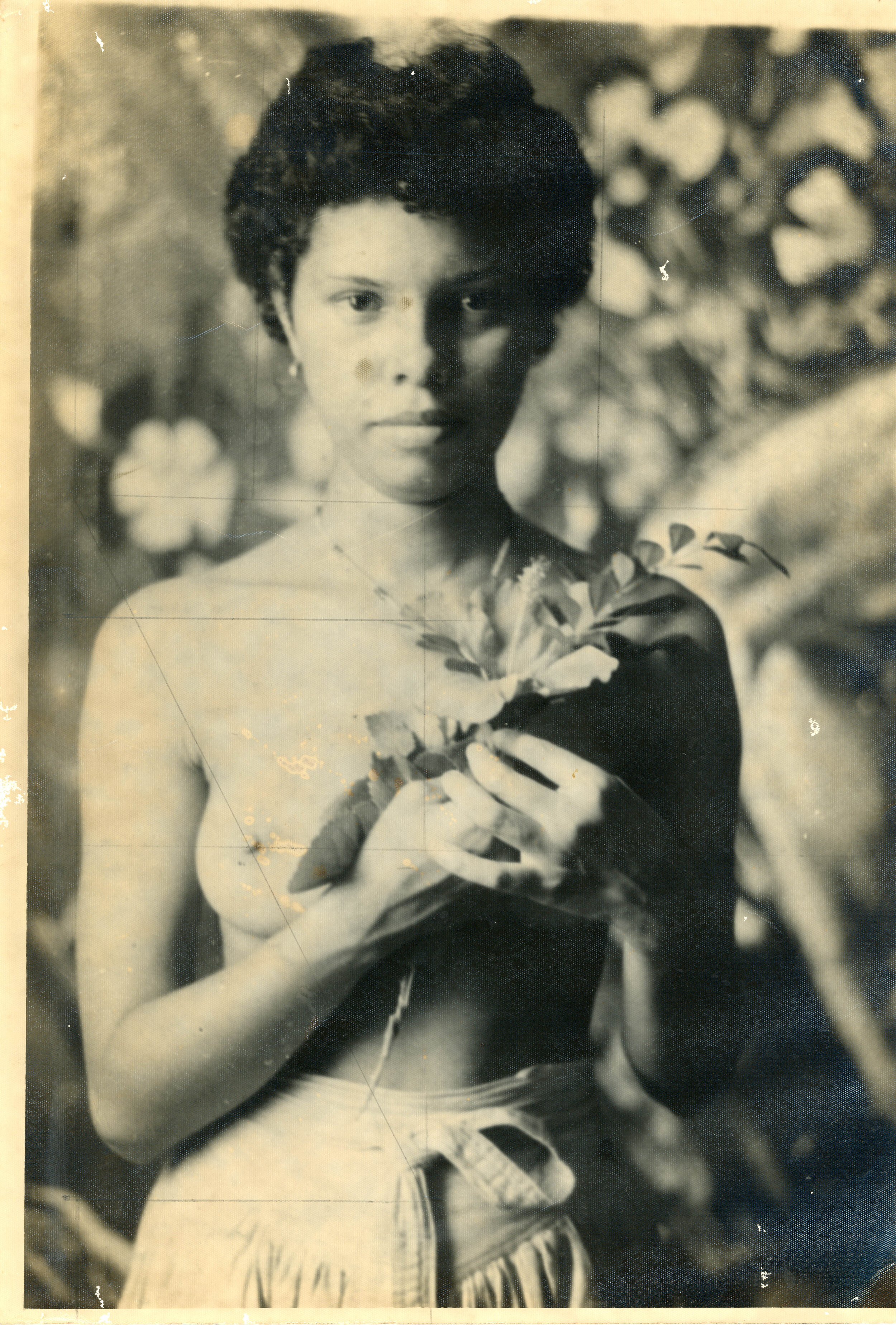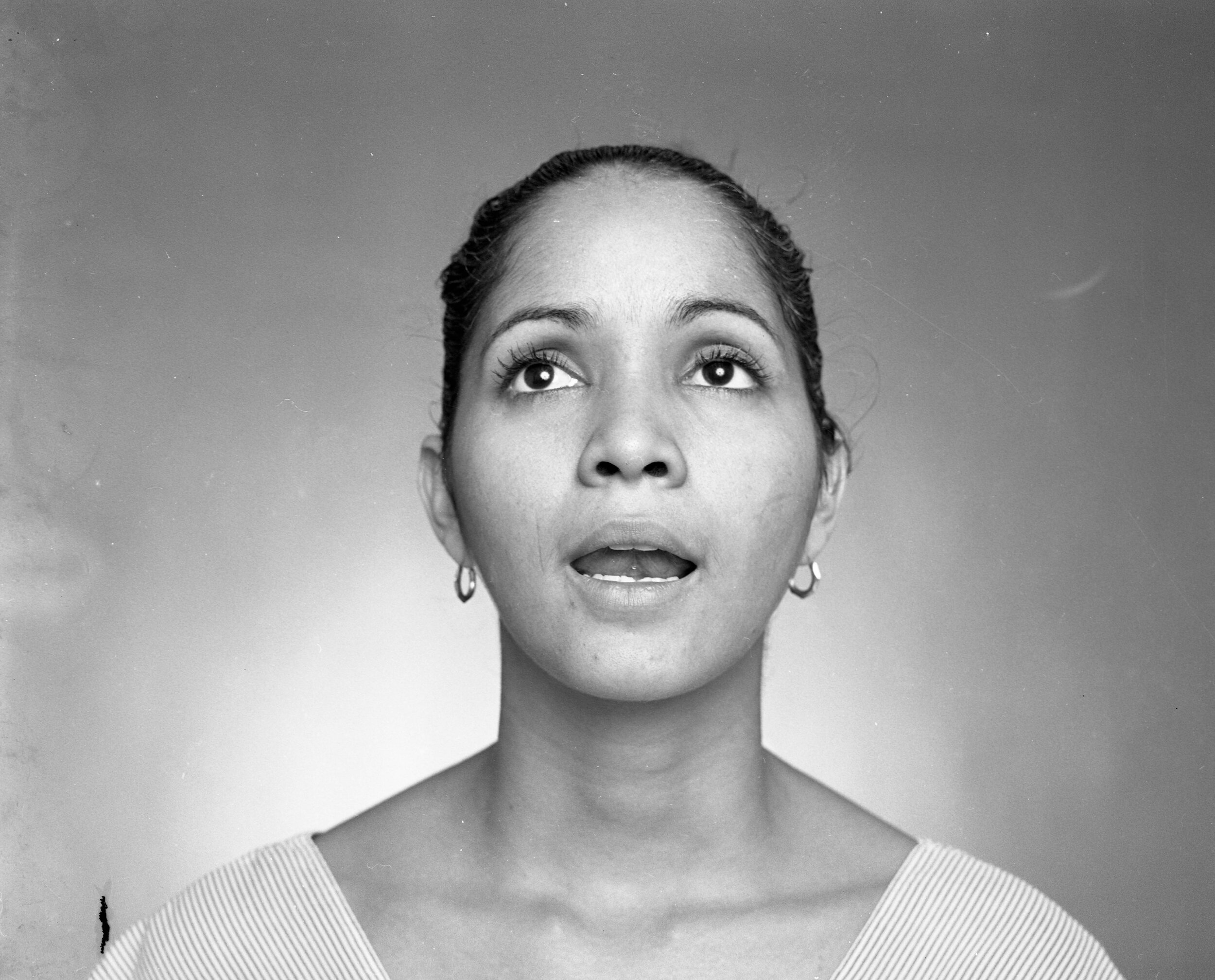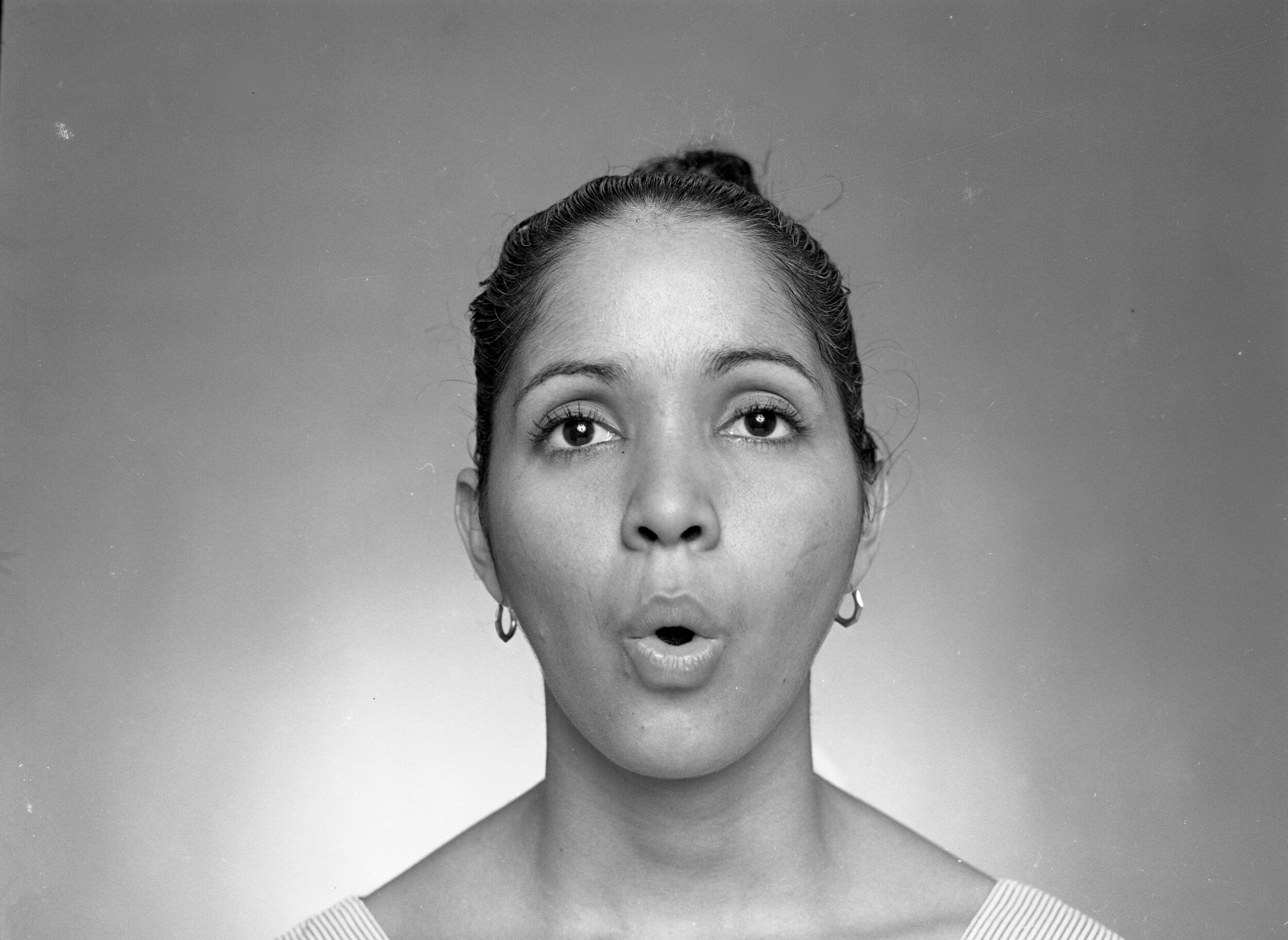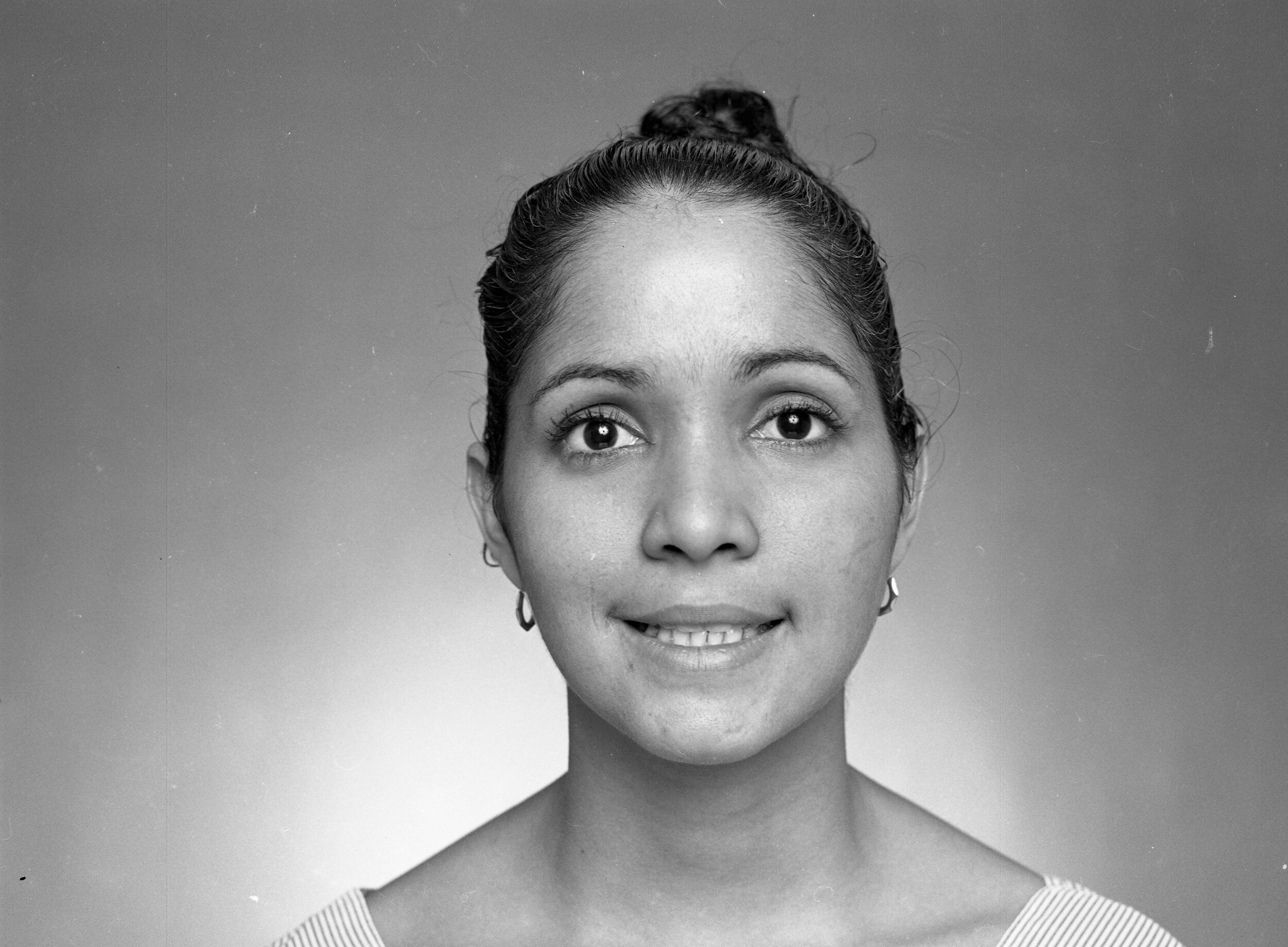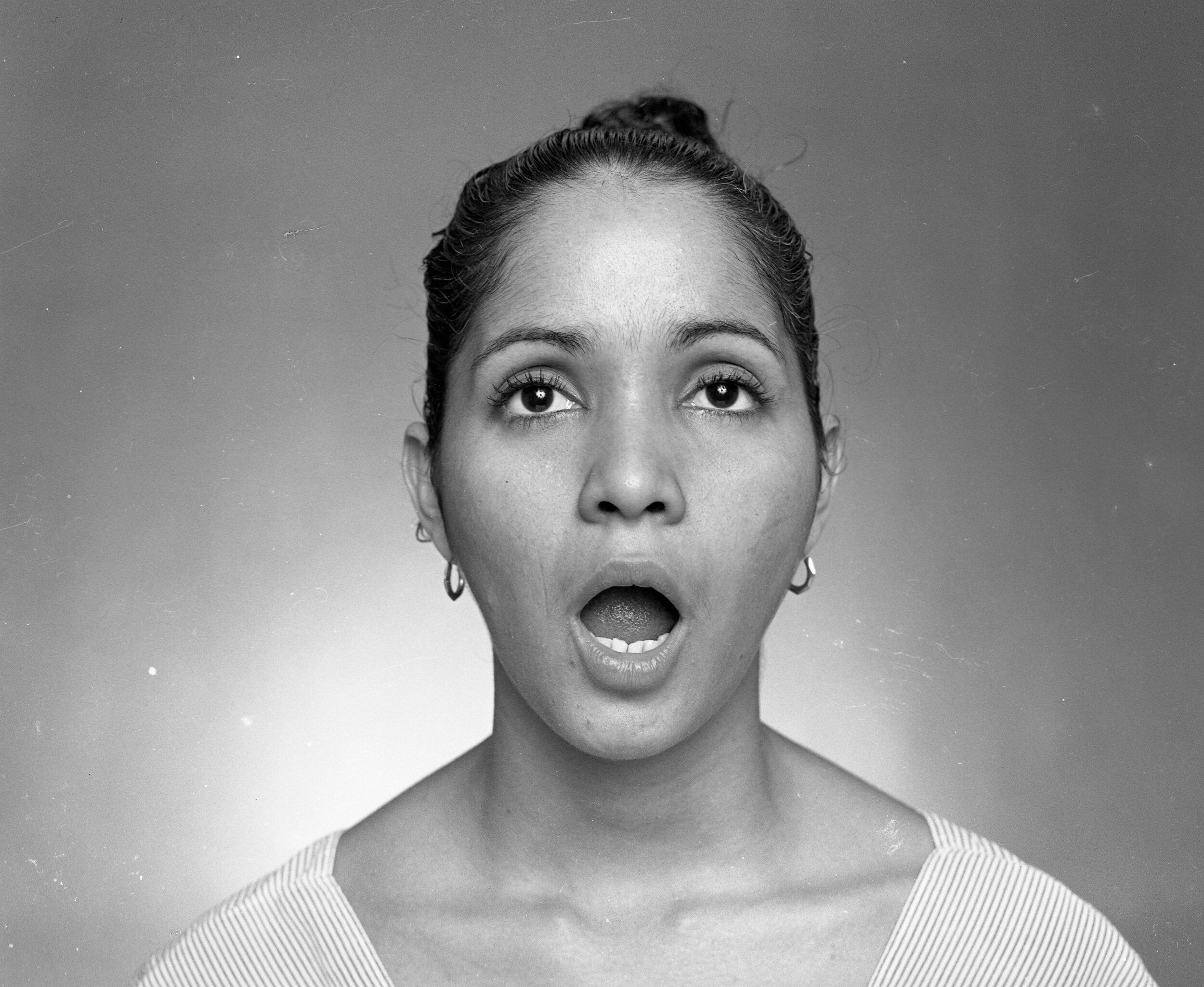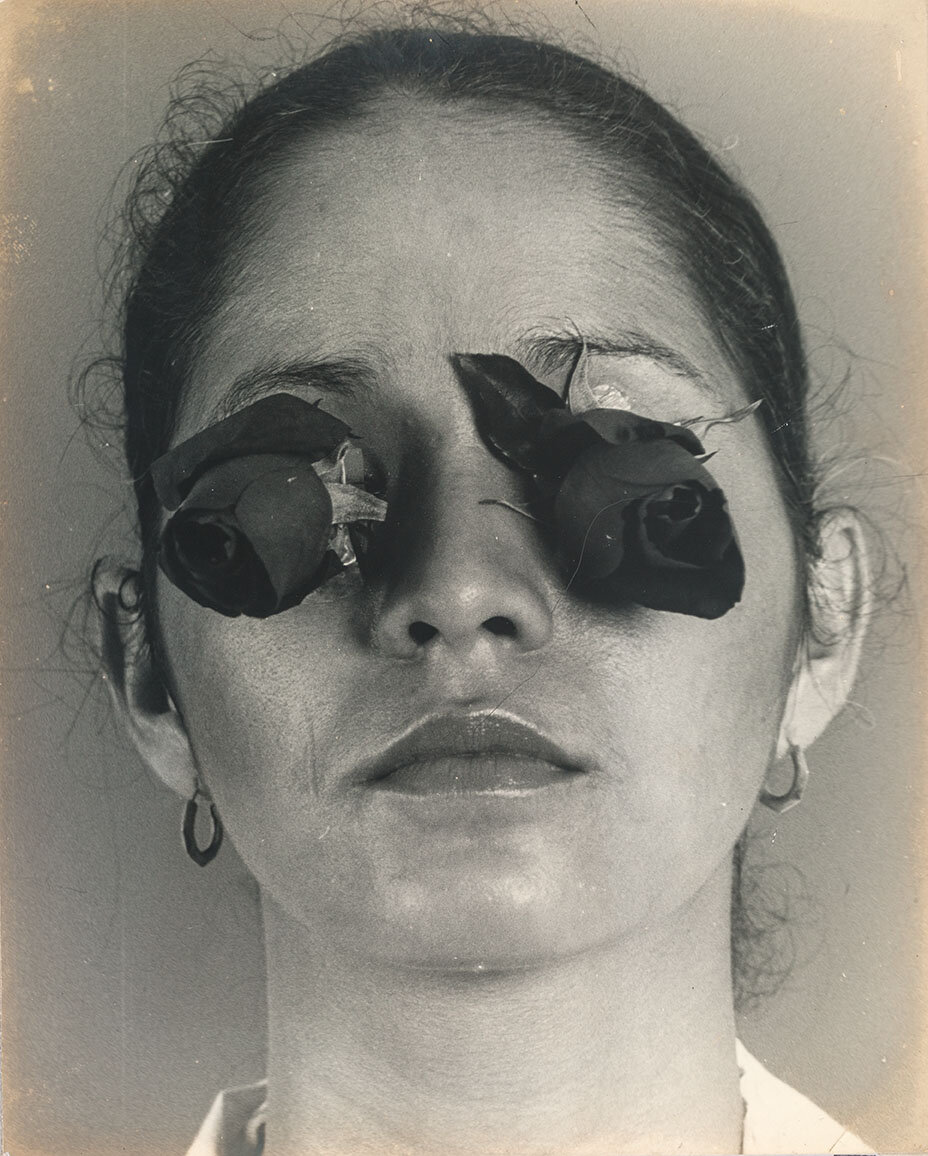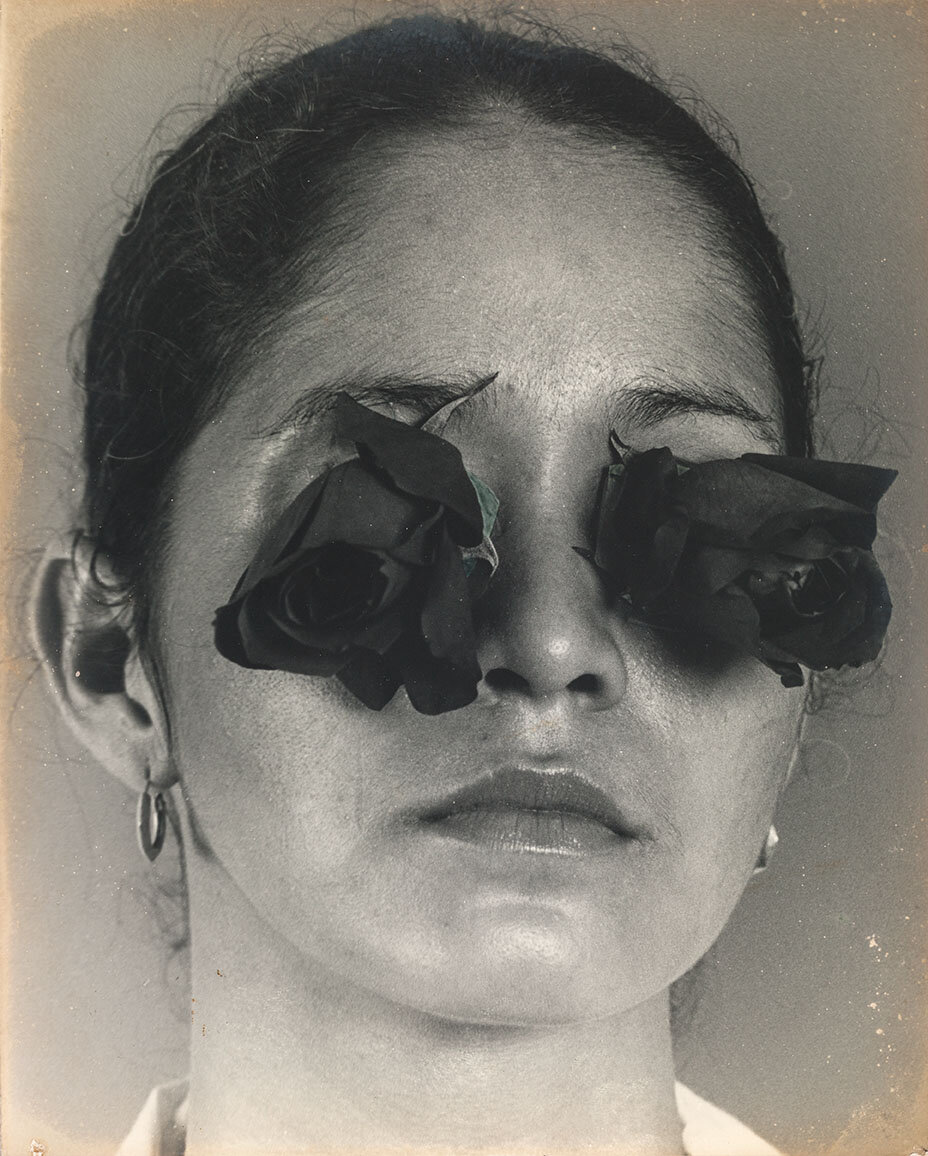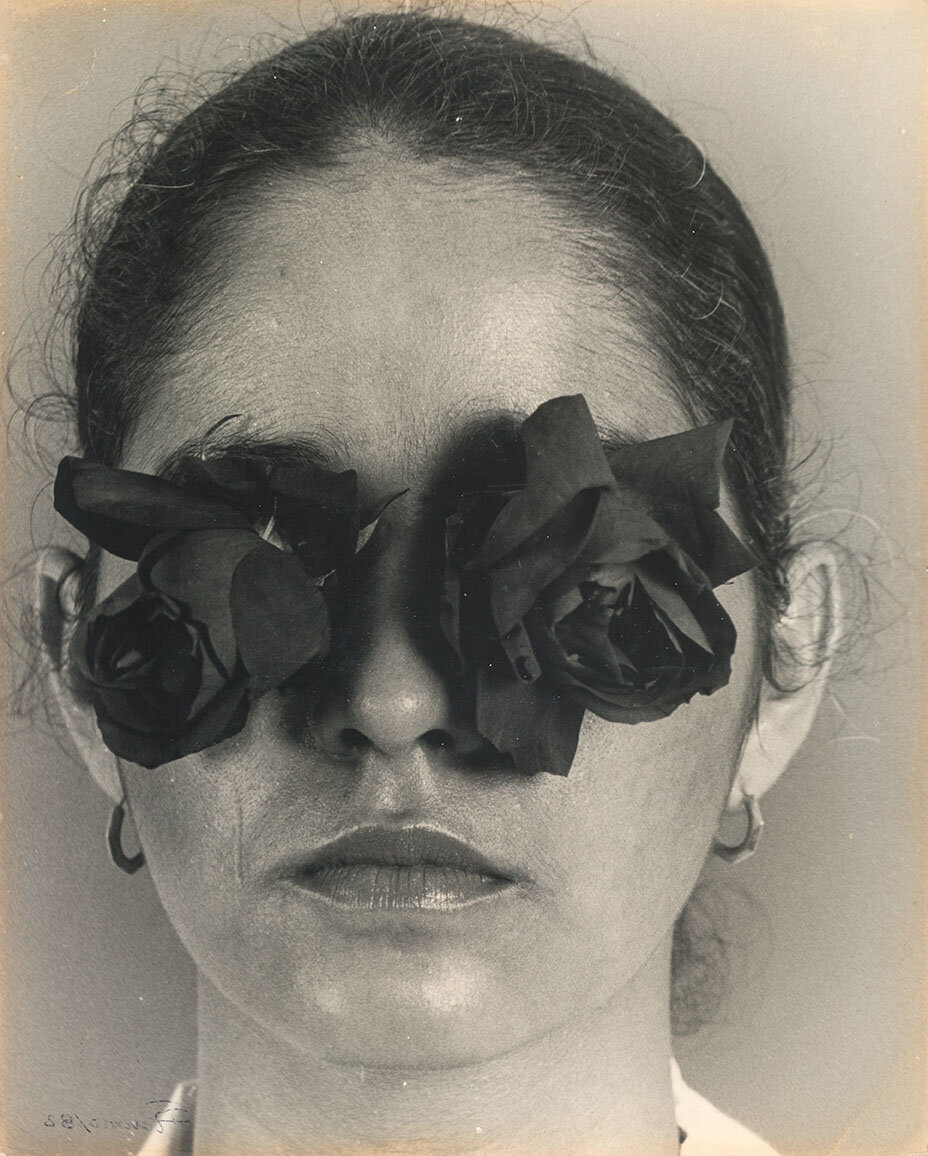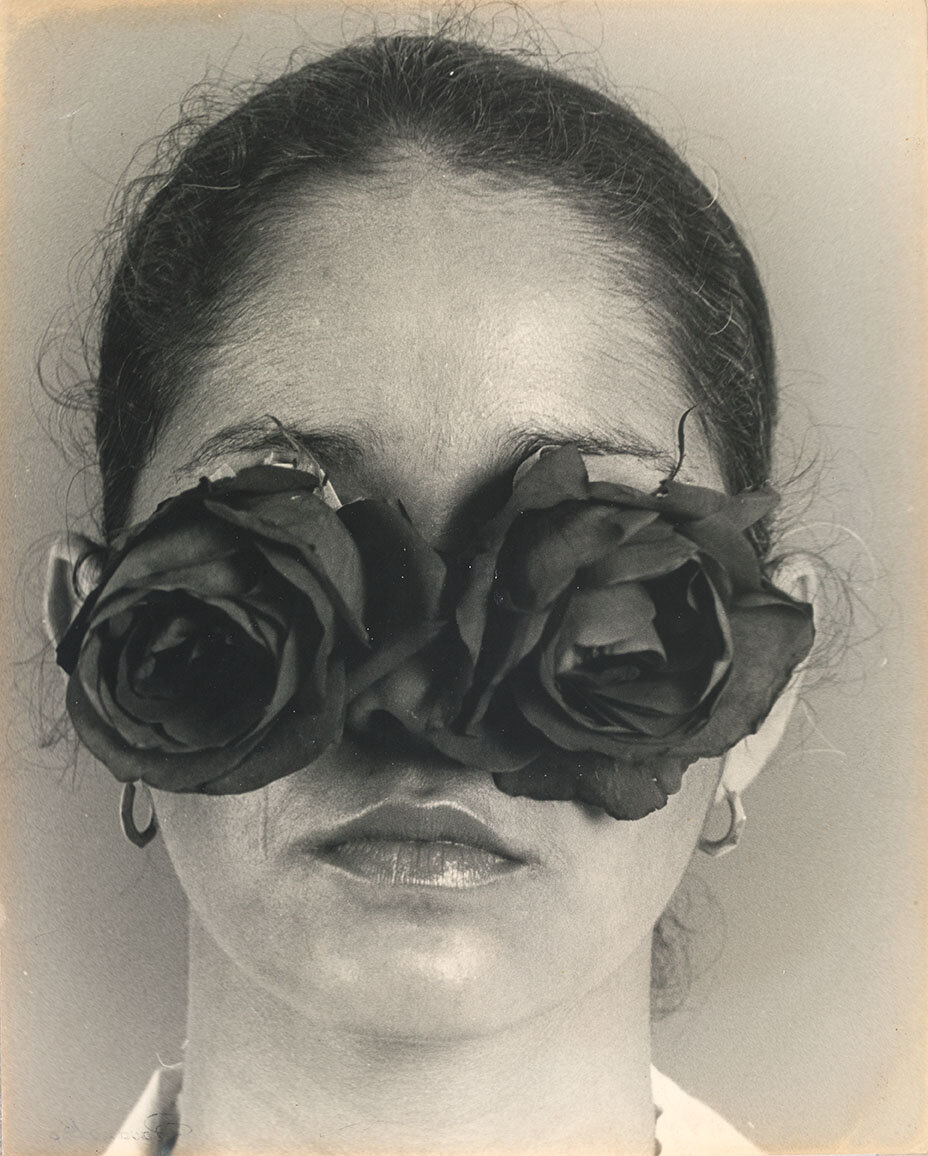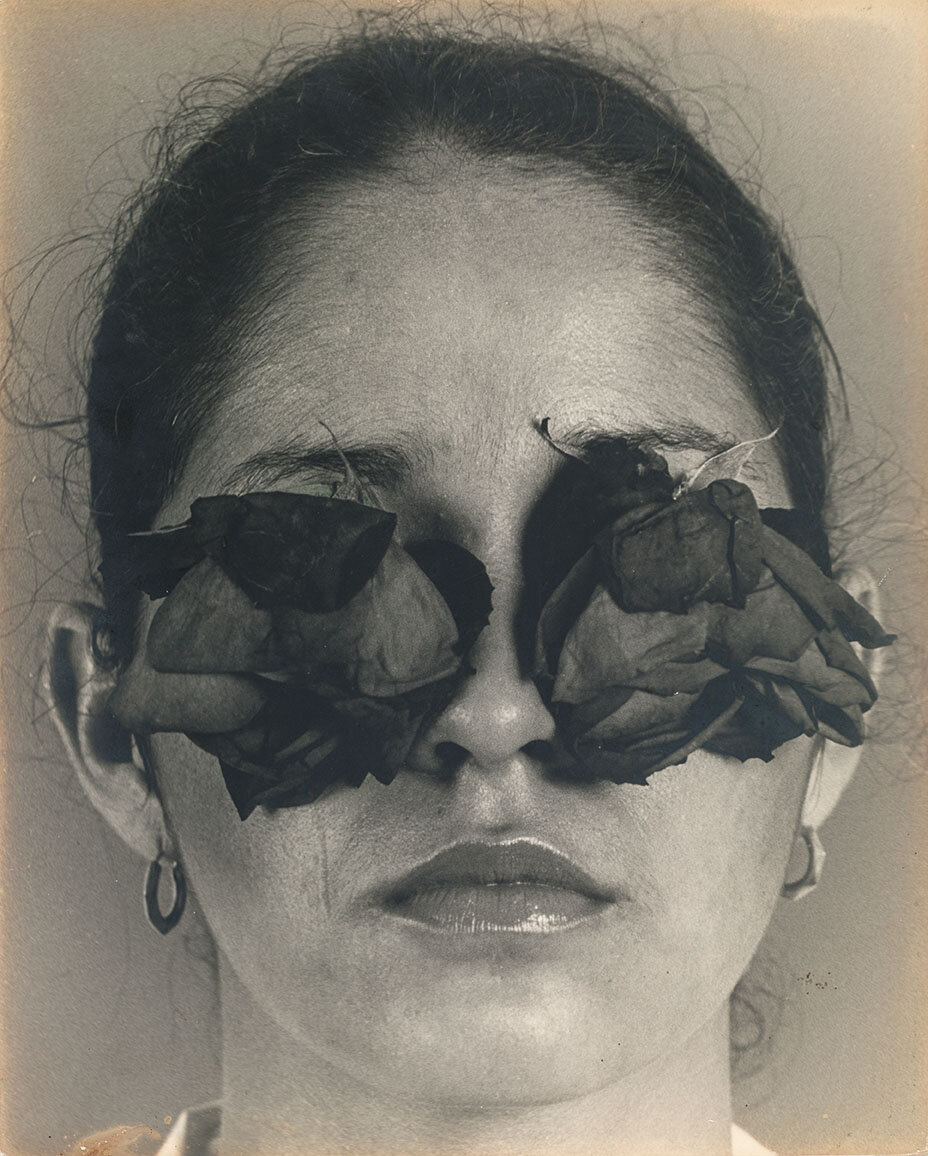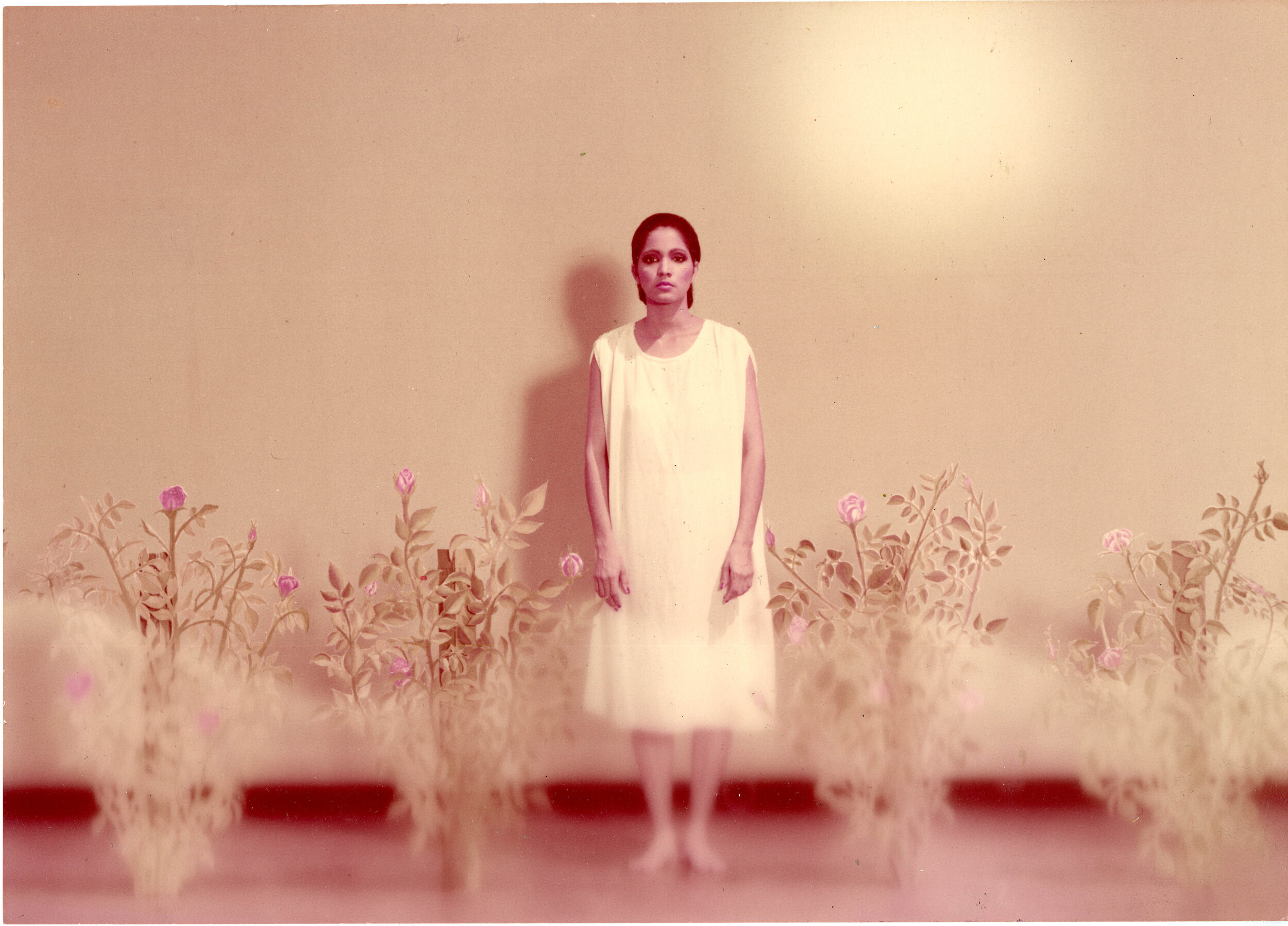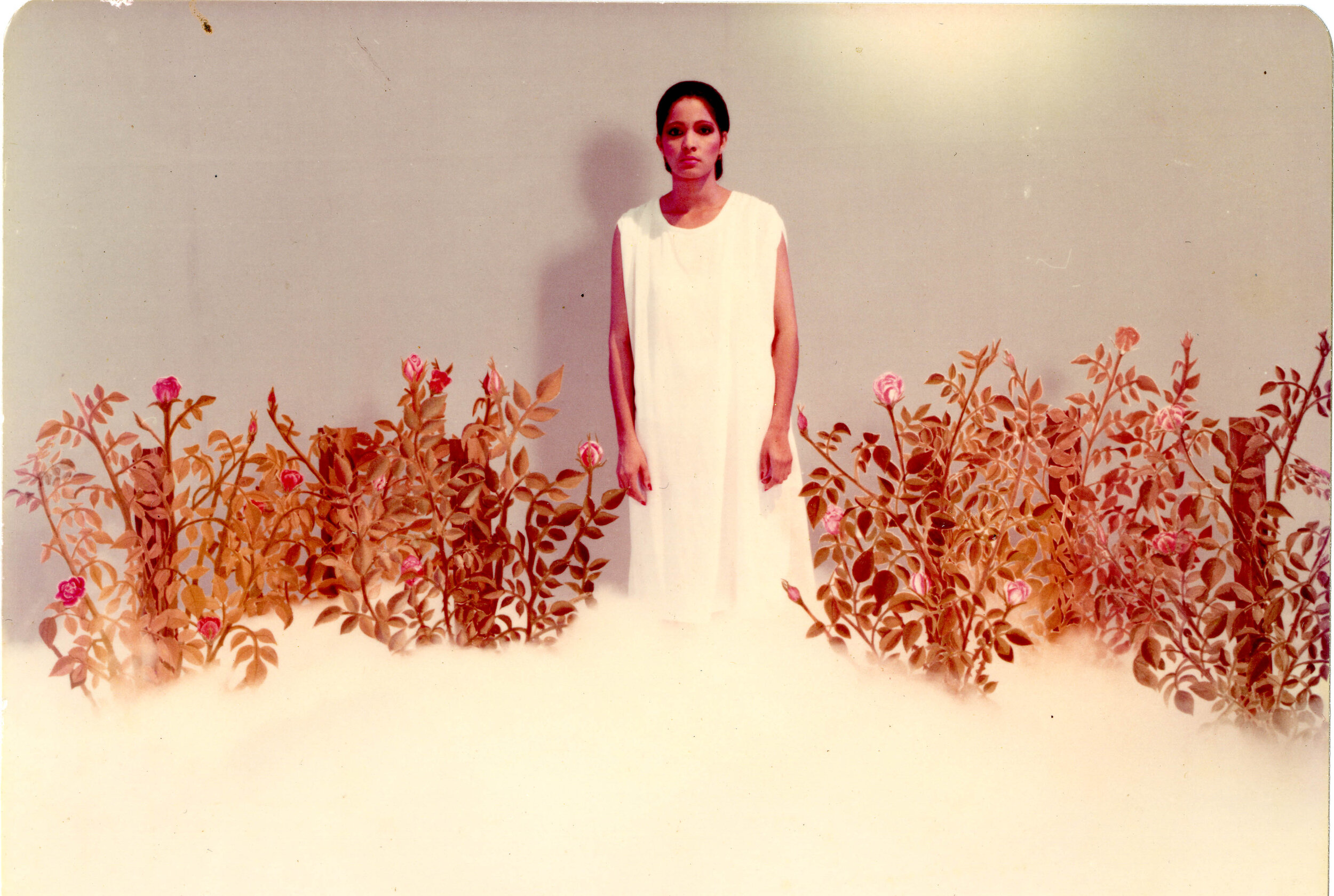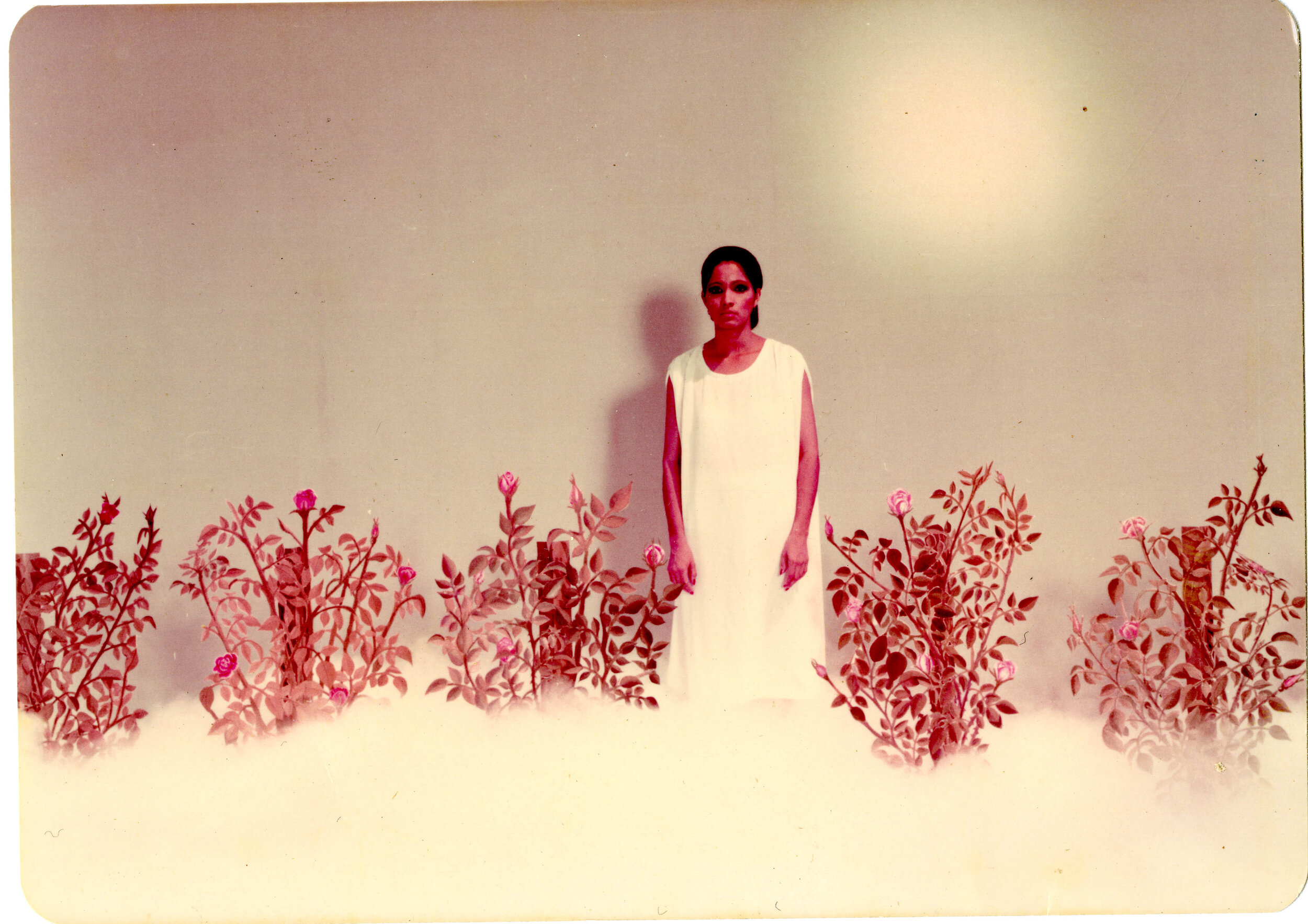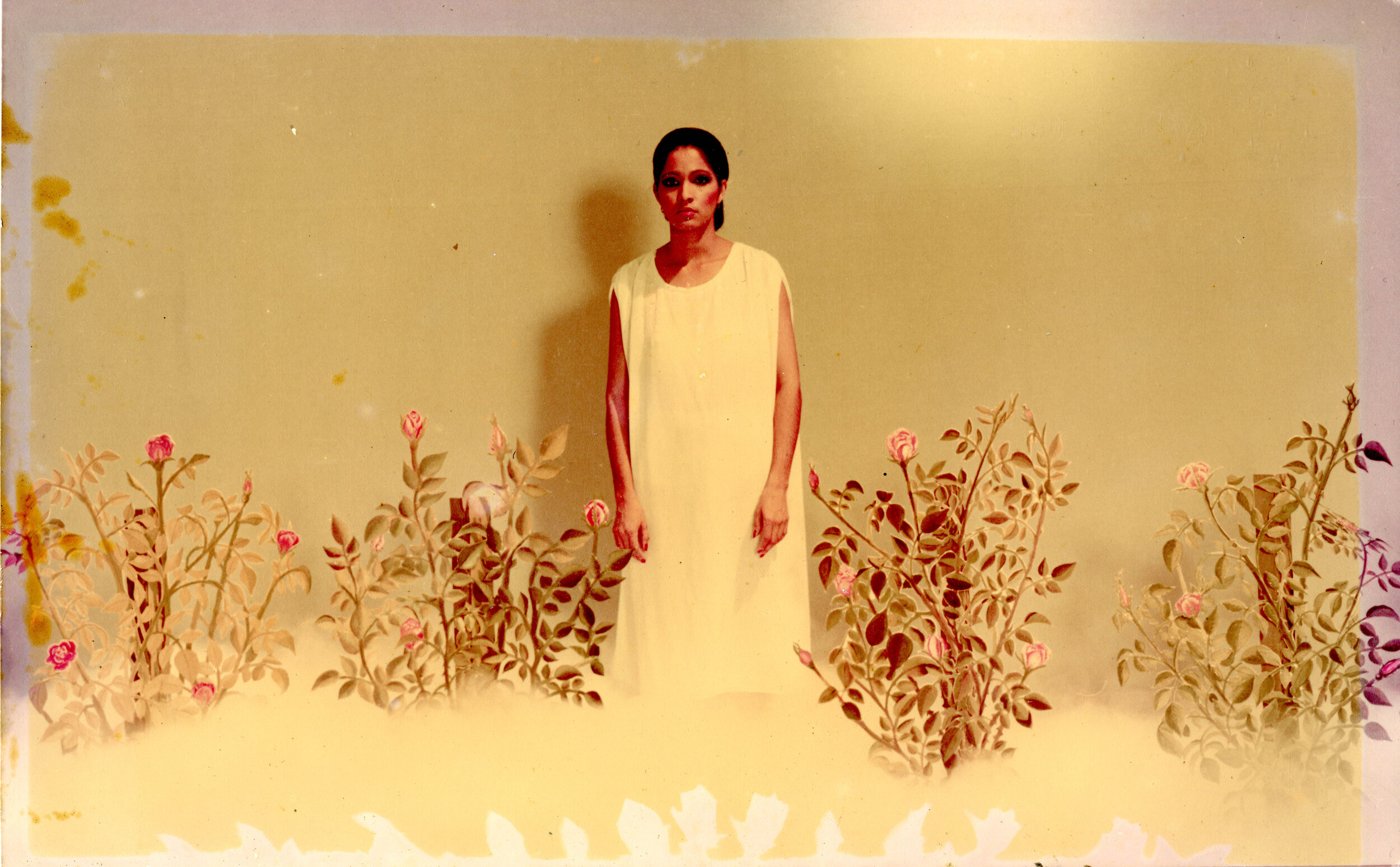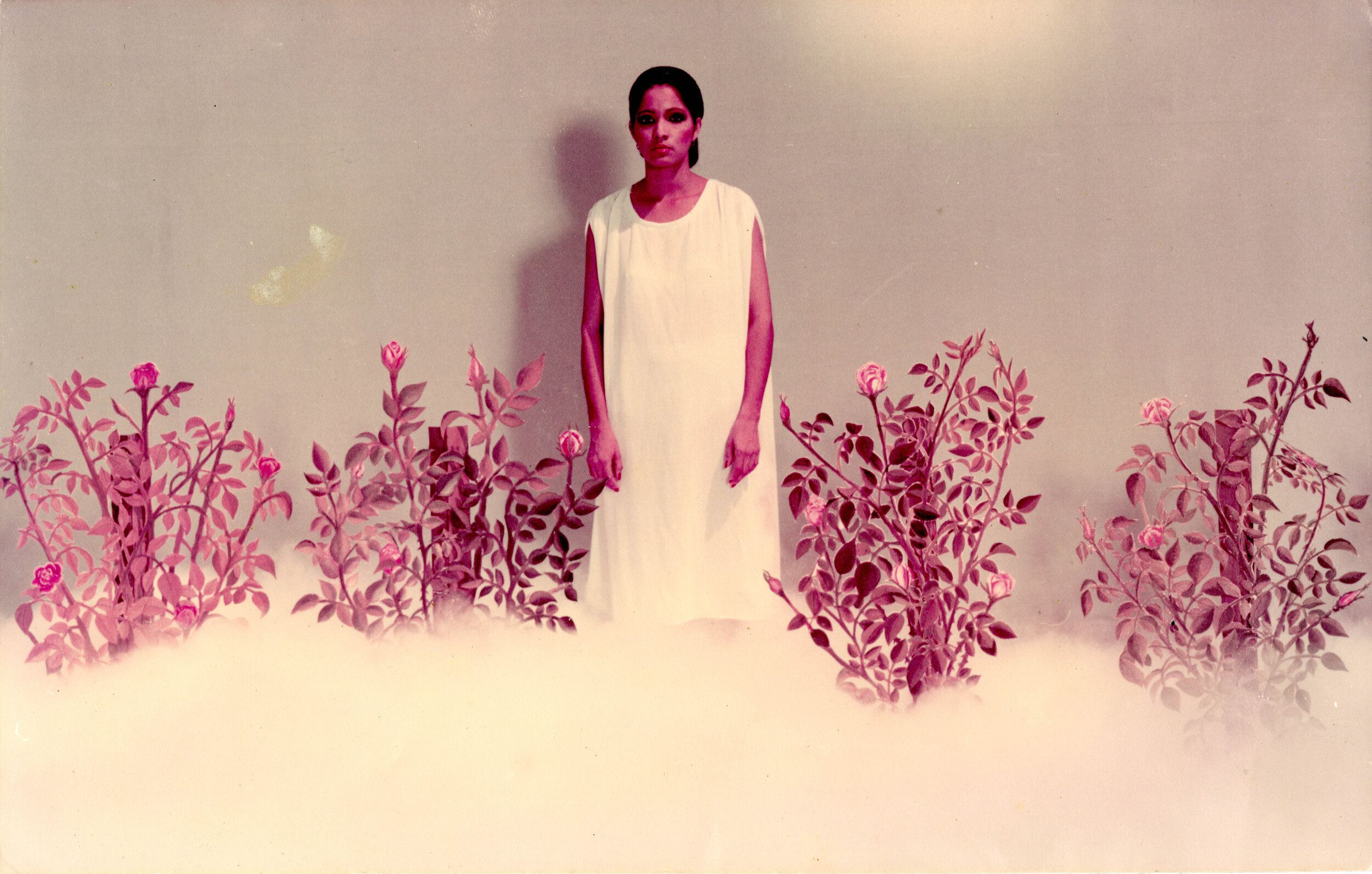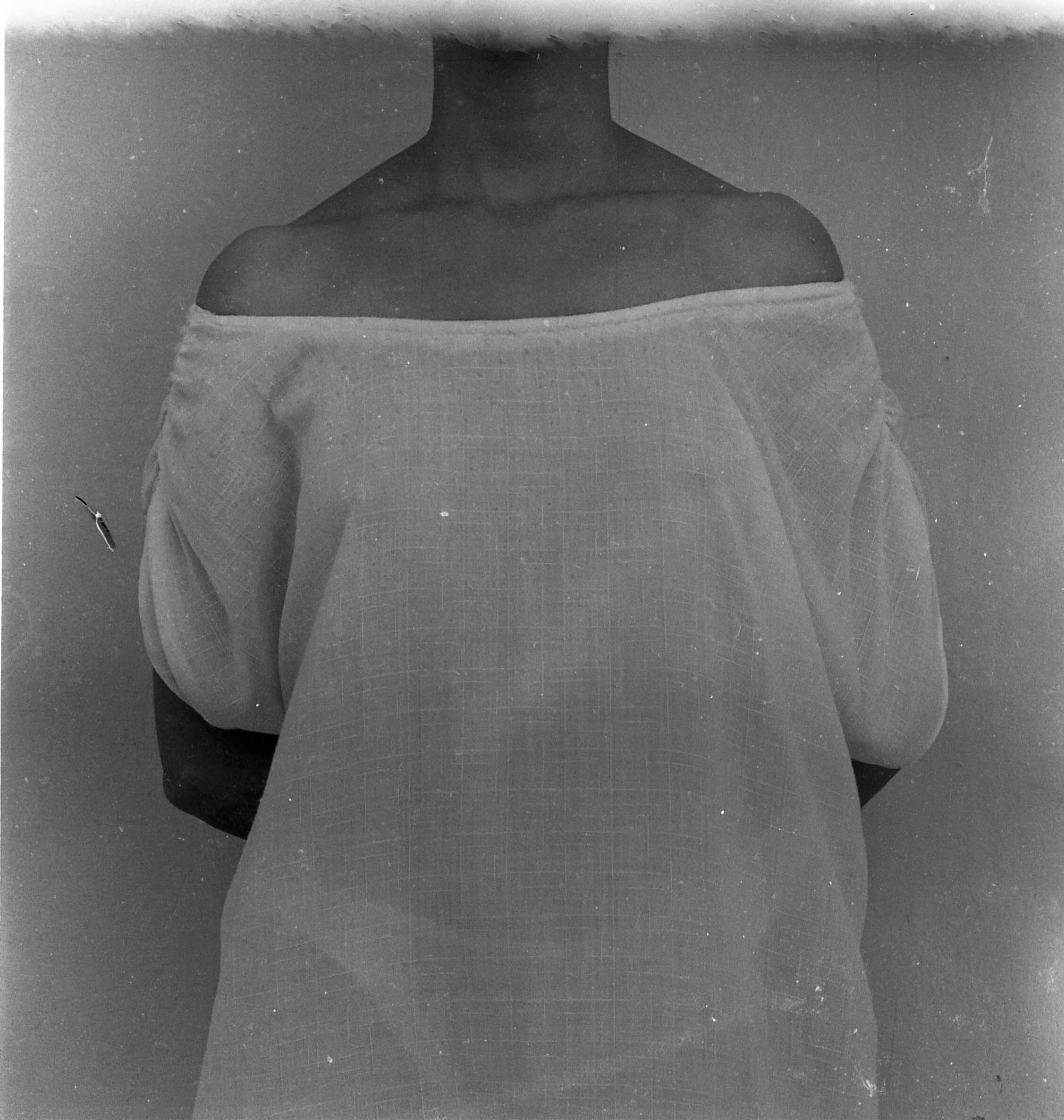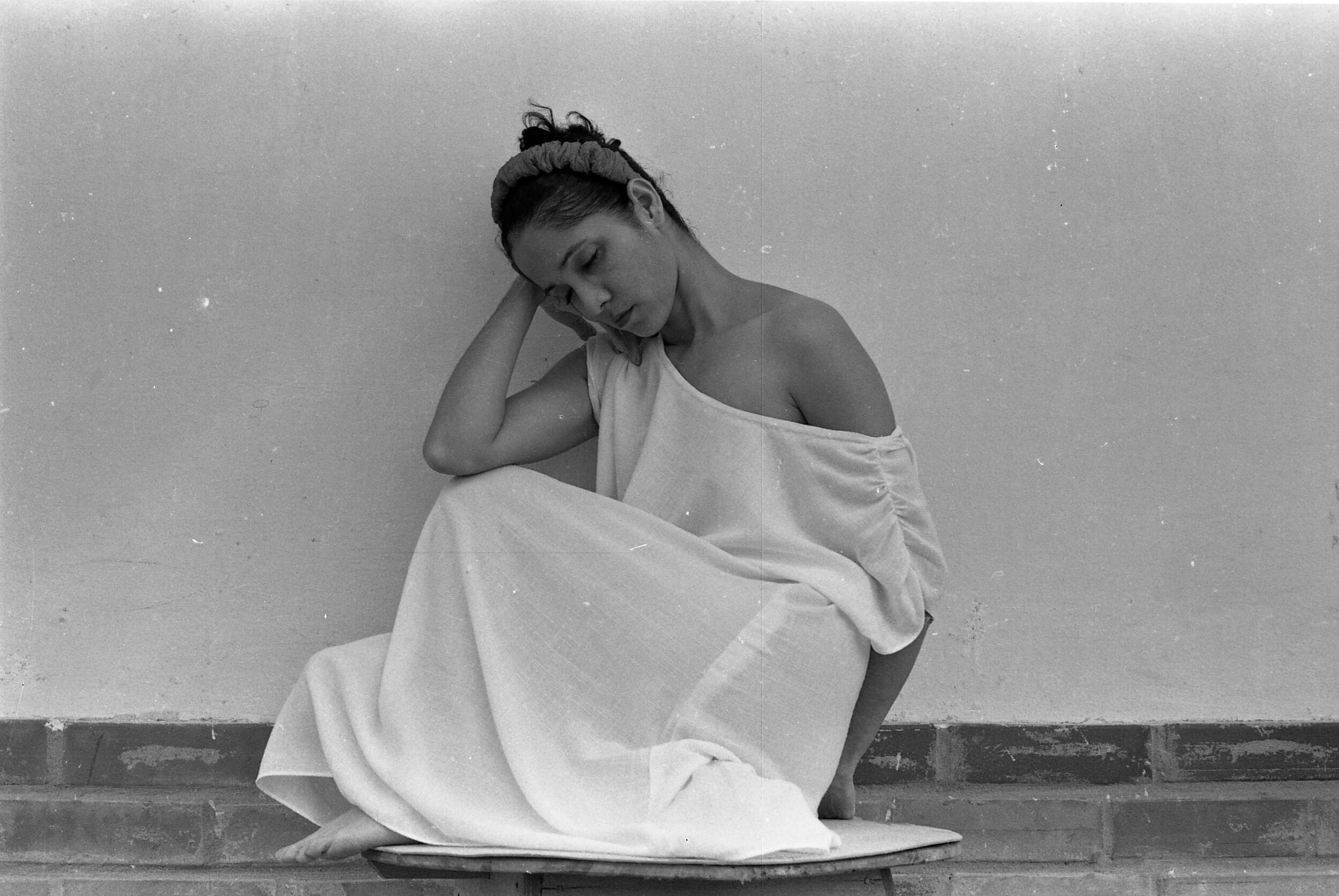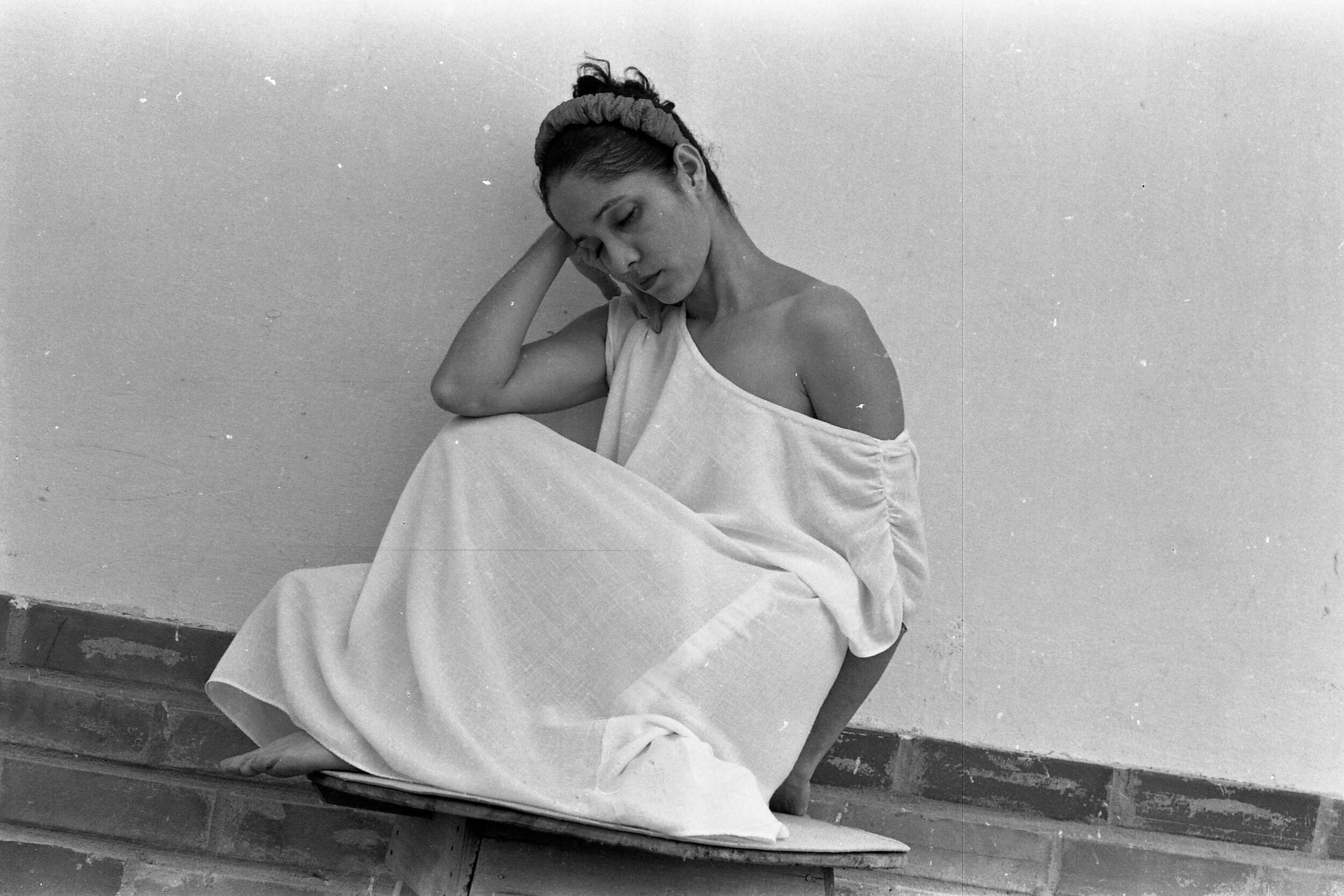Rosa Navarro
Rosa Navarro Barandica
Rosa de los vientos
Impresión digital al pigmento
60 x 50 cm (Soporte), 62 x 52 x 3.5 (Marco) c/u
1983 - 2018
Español
Para Rosa Navarro, hay al menos dos comienzos de la historia de su obra: el primero viene con el hallazgo de unos galones de pintura rosa, abandonados en la Escuela de Bellas Artes de Barranquilla; Rosa no puede evitar meter sus manos en el tarro y sacarlas pintadas de R-rosa.
En el segundo, siendo una niña aún, Rosa está jugando a dibujar con un palo sobre la tierra mojada por la lluvia, en el patio trasero de su casa, en Santo Tomás. En el patio hay un palo de mango, una palma, un níspero. La voz de la naturaleza en Santo Tomás es fuerte, incluso hoy el municipio apenas es atravesado por la fuerza urbanizadora.
English
For Rosa Navarro, there are at least two starting points in the story of her artwork: The first one comes with the finding of some gallons of pink painting abandoned in the Fine arts school of Barranquilla; Rosa couldn’t avoid sticking her hands in the bucket and taking them out all covered in R-rosa.
In the second one, being still a kid, Rosa was playing to draw with a stick on a soil ground, still wet with water, in the backyard of her house in Santo Tomás. In the backyard there is a mango branch, a palm, a medlar. The voice of nature in Santo Tomás is strong. Even today the town is barely touched by the power of urbanization.
Senos en flor,
Fotografía análoga
[1] [2] [3] 12.8 x 9.4 cm (Soporte), 32 x 24 x 3.5 cm (Marco) c/u
[4] 25.5 x 17.2 cm (Soporte) | 53 x 43 x 3.5 cm (Marco)
c.a 1980
Precio por solicitud
A pesar de ser anecdóticos, estos dos puntos de partida contienen elementos esenciales de la práctica artística de Navarro: primero, su atracción por la transmigración de los referentes, incluso, o sobre todo, la suspensión de ella misma como referente último de su nombre; y segundo, su regocijo frente al carácter fugaz de los juegos del lenguaje. Dos principios poéticos que dotan su obra de un carácter performativo inexpugnable, que cobija todas sus series bajo un solo y gran juego de transfiguración. No en vano la declaración que encierra toda su obra es: “La naturaleza habla: habla la rosa”.
Although being anecdotic, these two starting points contain essential elements to Navarro’s artistic practice: First, her attraction for the transmigration of her references, including, or over all, the suspension of herself as the ultimate referent of her name; and second, her joy towards the fleeting nature of wordplay. Two poetic principles that endow her work of a performative and unextendable character, that tucks all of her series under a big and only game of transfiguration. Not accidentally, the declaration that encloses her artwork is “Nature speaks: speaks the rose.”
R-O-S-A, (1983)
Impresión análoga en gelatina de plata
40 x 40 cm (Soporte), 42 x 42 x 3.5 cm (Marco) c/u
1983
5.600 USD*
La palabra caligrama viene del griego kállos (belleza) y grammé (trazo, contorno) = figura bella. Un caligrama es el texto/imagen donde la disposición caligráfica itera el contenido del texto, y viceversa. Para Foucault, en su famoso ensayo sobre la obra de Magritte, Esto no es una pipa, el caligrama no rearma el signicado de la imagen en el texto; al contrario, “en el momento en que debería dar el nombre, lo da, pero negando que sea aquél”; en este sentido Foulcault pregunta “¿de dónde proviene ese juego extraño, si no del caligrama? Del caligrama que dice dos veces las mismas cosas (allí donde sin duda bastaría una sola); del caligrama que hace deslizar uno sobre otro lo que muestra y lo que dice para que se enmascaren recíprocamente.”
La obra de Rosa Navarro coincide en muchos sentidos con este juego de enmascaramientos recíprocos, ya no sólo de las imágenes y los textos, sino también del habla, de los gestos y del cuerpo como enjambre de signos. Una mirada transversal a su obra, deja ver que su presencia así, como un palimpsesto sobre el que el sentido aparece siempre en el acto de fugarse, es el hilo conductor.
The word calligraphy comes from the greek word kállos (beauty) and grammé (traces, outline) = beautiful figure. A calligraphy is the image/text where the calligraphic disposition imitates the content of the text, and viceversa. For Foucault, in his famous essay about the artwork This Is Not a Pipe by Magritte, the calligram doesn’t rebuild the meaning of the image in the text. Rather the contrary, “ In the moment in which its name should be given, it is given, but denying that it is said one.” In this sense Foucault asks “Where does that strange game come from, if not from the calligram? From the calligram that says twice the same thing (there where surely a single one would be enough); from the calligram that slides one over the other making them show what it says to be unmasked reciprocally.”
Rosa Navarro’s work matches in many ways with this game of reciprocal unmaskings, now not only about images and texts but also about speech, gestures and the body as a swarm of signs. A crossed gaze towards her artwork, lets us see that her presence, as a palimpsest on which its meaning appears always in the act of fleeing, is the common theme.
Nacer y morir de una rosa
Impresión digital actual a partir de ampliación de época en gelatina de plata
25.3 x 20.3 cm (Soporte), 42 x 32 x 3.5 cm (Marco) c/u
1982 – 2019
8.250 USD*
Huellas en Rosa (edición de época)
Fotografía análoga a color
42 x 32 x 3.5 cm (Marco) c/u
1982
Hay incluso un punto de origen más en la narrativa de Navarro sobre su formación como artista: ver a su mamá en sus labores de costura y decoración, y en especial, aprender con ella a hacer flores de crespón para una tarea del colegio. Rosa también recuerda su fascinación infantil al escribir su nombre con las tizas rosadas que su mamá usaba para el patronaje cuando confeccionaba ropa, lo cual implica un vínculo profundo de su poética con el recuerdo de Rosa, que es también el nombre de su mamá. Ella también hace parte importante del enjambre hermenéutico que Navarro moviliza alrededor de su nombre.
There is even an extra starting point in Navarro’s narrative about her formation as an artist: seeing her mother whilst in her labors of sewing and decoration, and specially learning with to make with her crepe flowers for a school homework. Rosa also remembers her infantile fascination with writing her name with the pink chalk her mother used for the pattern making when she made clothes, which implies a profound link of her poetics with the memory of Rosa, which is also the name of her mother. She also has an important role in the hermeneutical swarm that Navarro moves around her name.
Rosa Rosae
Fotografía análoga doble exposición (montaje)
48 x 58 cm (Soporte), 50 x 60 cm (Marco)
1982
Precio por solicitud
Romana
Fotografía análoga a color
16.8 x 14.4 cm
1984 – 2019
Para Carmen María Jaramillo, Navarro, al contrario de otros artistas conceptuales “no estaba interesada en relaciones puramente tautológicas entre las palabras y las cosas. En lugar de eso, su interés estaba en las relaciones ambiguas, que eluden y abordan el mismo concepto de formas diferentes (...) Diferente del abordaje más directo de Kosuth, Navarro consideró la palabra rosa en niveles múltiples y complejos y buscó varias evocaciones”. Puesto que ocurre dentro del campo psicológico que se abre en torno a la identificación con el nombre propio, su obra no se constriñe a la especulación sobre las posibilidades y límites del lenguaje, como en el caso del conceptualismo tautológico, sino que atraviesa este marco especulativo para fragmentar y multiplicar las configuraciones de su propia subjetividad. Caligramas de Rosa.
Texto y curaduría de Sylvia Suárez
For Carmen María Jaramillo, Navarro, unlike other conceptual artists “was not interested in the purely tautological relationships within words and things. Instead, her interest was driven into ambiguous relationships, that elude and tackle the same concept in different forms (…) Different from Kosuth's more direct approach, Navarro considered the word “rosa” in multiple diverse and complex levels and looked for various evocations.” Since it occurs inside the psychological camp that it opens up with the identification with her own name, her work is not limited to speculation about possibilities and the limits of language, like in the case of tautological conceptualism, but rather it pierces the speculative framework to fragment and multiply the configurations of her own subjectivity.
Calligrams of Rosa.
Text and curatorship by Sylvia Suárez
ROSA en lenguaje de los sordomudos
Fotografía gelatina de plata iluminada con marcador de agua
11 x 20.5 cm (Soporte) c/u
1981
*Estos precios no incluyen IVA ni costos de envío
Si tienes preguntas sobre nuestros métodos de pago y envíos, escríbenos a quiero@espacioeldorado.com u oprime el botón QUIERO
Sin título, de la serie ROSA en lenguaje de los sordomudos
Fotografía instantánea
9 x 11 cm (Soporte), 32 x 24 x 3.5 cm (Marco) c/u
1984
Precio por solicitud
If you have questions regarding our payment and delivery methods, email us to quiero@espacioeldorado.com or click on “QUIERO”
Sin título, de la serie ROSA en lenguaje de los sordomudos
Fotografía instantánea
9 x 11 cm (Soporte), 32 x 24 x 3.5 cm (Marco) c/u
1984
Precio por solicitud
